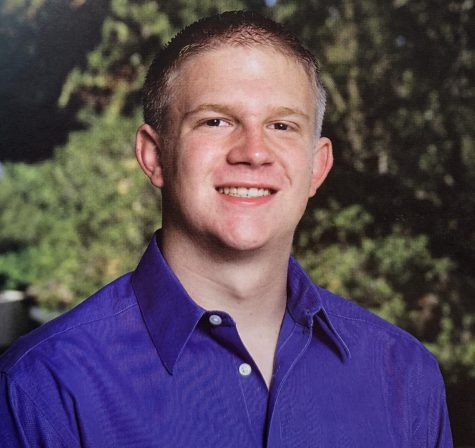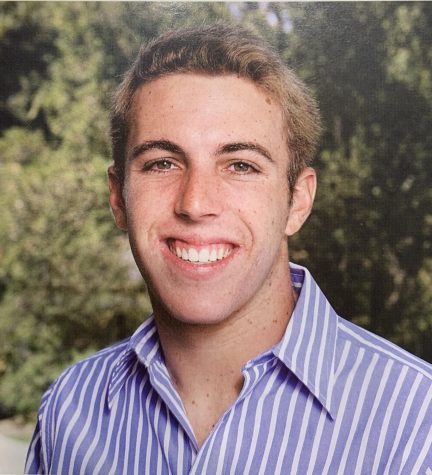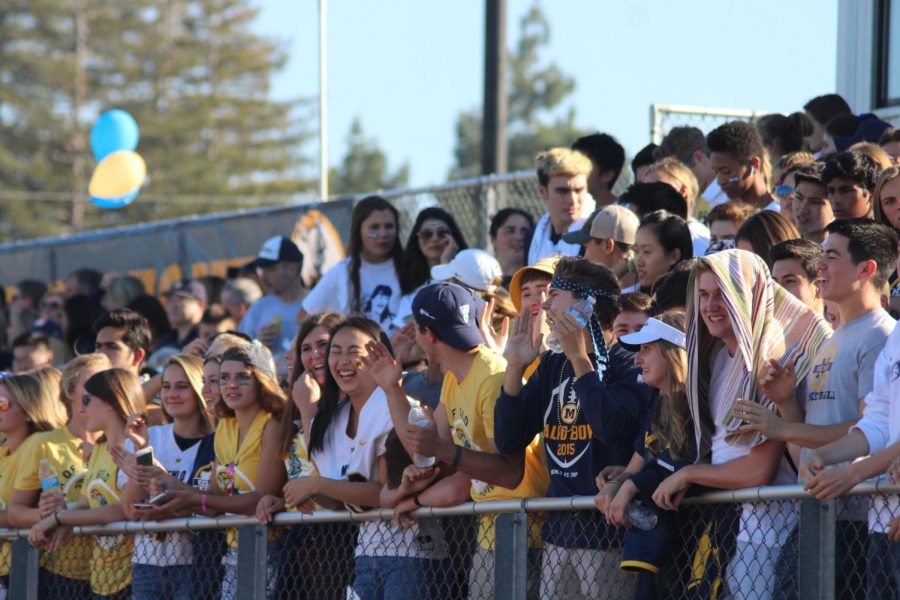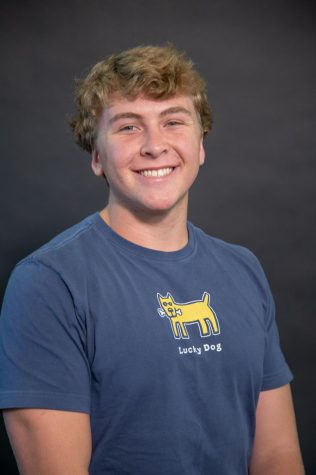The History of the Sea of Gold
November 9, 2018
The Sea of Gold, Menlo’s Spirit Organization, is a staple of the largest sports games of the year: Homecoming, Valparaiso Bowl and any home game against Sacred Heart Preparatory (SHP). They’re loud–really loud–and anytime the captains get in front of a crowd and buckle their imaginary roller coaster harnesses, you know the energy in the air is about to explode. The organization is so intertwined with Menlo School that it’s hard to imagine the school without it. But the Sea of Gold hasn’t been around forever; it’s actually only a decade old. And the story of the Sea of Gold didn’t start at Menlo. It started in the SHP bleachers in 2006, while dozens of Menlo students watched a basketball game.
Menlo Alumni Ryan Morris (‘08), a junior at the time, was one such student cheering on the Menlo basketball team that day at SHP. He had gone to plenty of Menlo sports games before this, and Morris himself played both football and baseball for the school, but, at both home and away games, the fan experience was uncoordinated. Menlo students sat spread throughout the stands, and an outside observer probably couldn’t tell who was and wasn’t cheering for the Knights. Morris said the Sea of Gold was born out of a desire for “uniformity,” and that at that SHP game in 2006, Menlo students showed up in numbers that inspired him and two friends, Alumni Colin Etnire (‘08) and Alumni Mitch Cavander (‘08), to try to focus all of Menlo’s spirit into one organization, which Morris himself named “The Sea of Gold.” “I was the ringleader, and I would always start cheers at games, so it just made sense to bring everyone in the stands onto the same team. And once it was a more uniform thing, people felt more comfortable in the stands, and it became popular to go to away games,” Morris said.



Senior portraits in the Menlo yearbook (From left to right): Ryan Morris (’08), Colin Etnire (’08) and Mitch Cavender (’08).
Once the organization was named, Morris, Etnire and Cavander set out to equip Menlo students with the shirts and rally towels needed to be as loud as possible at games. “We went and had shirts and towels made at Goetz Brothers, then sold them to Menlo students really cheap so everyone could get one. Because everyone had them, everyone felt more inclined to go to games and sit together and cheer louder. The t-shirts especially really helped increase turnout,” Etnire said via Twitter DMs.
Before The Sea of Gold was created, Menlo was unique in its lack of dedicated cheering section. “Other schools would get really loud and have a real impact on the game, and for a long time we just didn’t have that,” Morris said. But once it got going, the Sea of Gold became a phenomenon. “People couldn’t get enough, every Menlo game was basically sold out. The demand was insane. I remember it peaked in 2007 at a [Menlo-Atherton] game where they had to bring in stands on the other side of the stadium to fit all the kids who came. We would do the Yankee Stadium roll call at the beginning of every game, and people came so early so they could cheer as the players came on. We had so many chants and everyone knew when to do each one,” Morris said, “Like when the basketball coach threw a ball into the stands, we would scream the UCLA ‘This Is the Basketball’ chant. The students were always firing on all cylinders.”
These three leaders, Morris, Etnire and Cavander, didn’t realize that what they had created would outlast them for as long as it has. More than a decade later, the Sea of Gold is still screaming from the bleachers, but some of this original furor seems to be lost. The Sea of Gold undoubtedly was at its peak in 2007, but ever since, subsequent classes have had trouble re-capturing the school spirit that exploded 10 years ago. A 2012 Coat of Arms opinion piece titled Why Sea of Gold is Mired in Mediocrity captures this sentiment exactly. But despite the differences year by year, the organization persists. It’s going on a decade strong and shows no immediate signs of stopping. Our captains still cheer and Menlo fans still chant. It’s important to know where the Sea of Gold came from to know what it can be.



